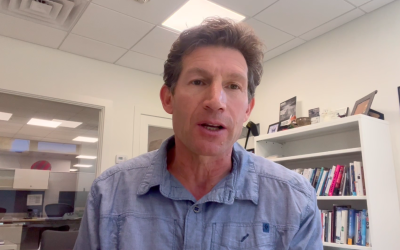A destination’s perceived success is often tied to visitation. An increase in visitation can help destination leaders justify funding for their organization because they can reference the direct economic benefit their industry receives. In general, wealthy stakeholders are happy stakeholders.
However, more and more of today’s destinations face challenges of overcrowding. Tourism promotion in one region of Norway has ceased due to a steep, uncontrolled rise in visitors. In this UN International Year of Sustainable Tourism for Development, more industry leaders are recognizing that tourism yield is becoming more important than sheer visitation numbers, and are challenging the notion that increased visitation is always good.

Better yield is good for business. More dollars per visitor means that a destination needs less visitors to thrive, and can avoid the dangers of mass tourism. But a place is more than a business or a product to bring to market. As Steve Jobs once said, “Marketing is about values.”
Healthy tourism means more than visitation or yield
Which values are most important for tourism? City marketing expert and Destination Think strategist Frank Cuypers sees a need for change and a renewed sense of purpose.
“Today’s destination marketers automatically equate tourism with a consumer-based model, where higher profits mean success. In doing so, we may have forgotten that the essence of tourism is, instead, a community-based model in which every host treats their guest the way they would want to be treated when they visit another country as a guest, and vice-versa.”
For the destination marketing organization (DMO), managing tourism growth properly and collectively is essential. To do this, communities need to redefine the value of tourism together.
The real value for residents, Cuypers says, is that tourism can help them begin to see themselves as others do.
“Tourism can benefit the local community in many non-economic ways. For example, it can increase community pride; build cultural exchange and empowerment; improve language skills; and increase awareness of conservation, which includes natural resources, heritage, and authenticity.”
Community-based approaches to tourism
We can look to the Thai village of Mae Klang Luang for a strong example of a shift to community-based tourism. In this and other area villages, residents host visitors in their homes, offering insight into local life and customs, while providing access to attractions like hiking expeditions. In Mae Klang Luang, tourism also is helping the people protect forests by becoming less dependent on growing and harvesting poppies.
Other opportunities to link conservation and travel are emerging as well. Tourists visiting the far northern destination of Svalbard, Norway in 2015 spent time cleaning beaches of garbage and debris. One recent visitor from Kenya put it this way: “We enjoy this beautiful place, and we help save some animals that might be endangered [by the pollution].”
All destinations need to articulate the value tourism brings its community
Of course, many destinations aren’t currently struggling with mass tourism or unsustainable visitation. Why should they be concerned with defining value for residents?
“Places are dynamic organisms and are therefore vulnerable; they have a lifecycle,” says Cuypers. “Amsterdam and Barcelona are economically strong, booming, cool cities in Europe. A decade ago, who would have thought that they now need to promote their destinations cautiously, not to mention address the growing negative sentiments of citizens?
“Every place should be aware that one wrong decision can cause damage. Pricing policies, low-cost airlines, visitor management, urban zoning, citizen engagement, and a sustainable vision are all areas of concern. Ignoring the interdependency between destination promotion and destination development is like dancing with the devil, over the long term.”
Ask better questions
One good question destination marketers can ask to differentiate their promotional messaging is, “What would the world miss if your destination fell off the face of the Earth?”
When it comes to destination development, perhaps a better question is, “What would your destination miss without its visitors?” It’s better that your DMO asks and begins to answer that question, rather than waiting for your residents and stakeholders to raise it.
Related reading: Copenhagen declares “The End of Tourism as We Know It” in 4-year destination strategy
Featured image credit: Bindalfrodo, Flickr









0 Comments